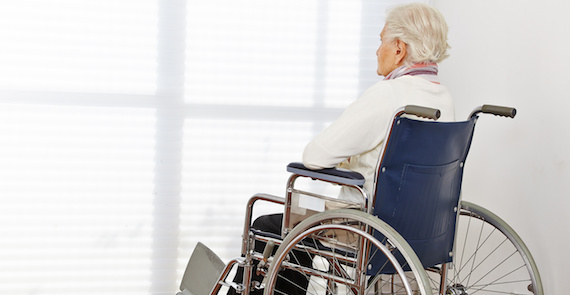Corona Virus Ravaging Nursing Homes
May 27, 2020

As we continue to wind through the coronavirus, the most obvious cases of infection have centered around our nursing homes. There is no doubt that nursing homes and similar group living facilities are in a difficult position. USA TODAY reports that a minimum of 2300 long-term care facilities in 37 states have reported positive cases of COVID-19 and that over 3000 residents had died. Because the infection spreads rapidly and is not always symptomatic, nursing homes that exercise reasonable care may still experience an outbreak. USA TODAY also reports that before the pandemic, 75% of nursing homes had been cited for failing to properly monitor and control infection in the past three years.
Elderly and immuno-compromised individuals are particularly vulnerable to COVID-19 and whether the facility that they reside in is responsible for their infection requires a thorough investigation.
- Did management require staff members to wear masks and gloves during interactions with patients?
- Were admissions reduced to protect the population density and allow for social distancing?
- What precautions were put in place by management to assure that nurses and other staff members were not infected?
- Were all symptoms of potential infection recognized and immediately acted upon?
- Were all necessary steps taken to disinfect rooms and common areas?
- Were exposed or infected residents quarantined?
These questions also pertain to other congregate living areas including hospitals, assisted living, jails, cruise ships and homeless shelters.
The CDC has put forth the following guidelines for long term care strategies:
1. Keep COVID-19 from entering your facility
-restrict all visitors
-restrict all volunteer and non-essential health care personnel
-actively screen anyone entering the building for fever or symptoms of COVID-19 before starting each shift. Send all ill personnel home. Sick leave policy should be flexible and non-punitive
-cancel all trips outside of the facility for residents
2. Identify infections early
-actively screen all residents daily for fever and symptoms of COVID-19; If symptomatic, immediately isolate and implement transmission-based precautions
-notify state and local health department immediately if the following occur: severe respiratory infection causing hospitalization or sudden death; clusters of respiratory infection; Individuals with suspected or confirmed COVID-19
3. Prevent spread of COVID-19 by taking these actions:
-cancel group activities and communal dining
-enforce social distancing among residents
-ensure residents wear a cloth face covering whenever they leave their room, are around other residents or when they leave the facility for essential medical appointments
-ensure all hcp wear a face mask or cloth face covering while in the facility
If COVID-19 is identified in the facility, restrict all residents to their rooms and have all health care personnel wear all recommended PPE for care of residents. This includes an N95 or higher-level respirator, eye protection, gloves and gown. Healthcare personnel should be trained on PPE use, including putting it on and taking it off.
4. Assess supply of personal protective equipment and initiate measures to optimize current supply
5. Identify and manage severe illness
-have a designated location to care for residents with suspected or confirmed COVID-19 that is separate from other residents
-monitor ill residents at least three times daily to quickly identify residents who require transfer to a higher level of care
-testing should be implemented in addition to infection control measures
Despite the mandate for maintaining an active infection control program in nursing homes, there are multiple issues that limit the proper implementation of an infection control program in this setting that differ substantially from those in the hospital setting:
- The employee assigned to do infection control has many other responsibilities and this limits the time available for prevention/surveillance activities.
- There is a lack of training in infection control principles; most have “on the job” training.
- Infection control is mandatory, but the resources assigned for this activity are limited in most facilities.
- Diagnostic capability is limited, making infection surveillance difficult.
- The population served by a nursing home varies from people admitted for skilled care, who will be discharged in a relatively short time, to those who permanently live in the facility; the risk of infection may be quite different between these two groups.
- Among the long-term care population in a nursing home, the infection risk may vary significantly depending on functional impairment and the amount of care required by staff; this risk has yet to be quantified accurately.
- There are no national benchmarks for infection incidence in long-term care facilities.
- Lack of recognition by facility administrators of the importance of infection control.
- Most of the infection control policies and procedures used in nursing homes are modifications of hospital policies and may not always be applicable; there is a lack of clinical trials to determine effective infection control procedures in the nursing home setting.
At Saponaro, Inc. we are taking precautions to keep all our employees healthy and continue to provide services efficiently and without interruption. We are available to answer any questions or concerns you have about expert witness services for coronavirus litigation or other legal matters.
Need an expert for your case? Contact us today.
